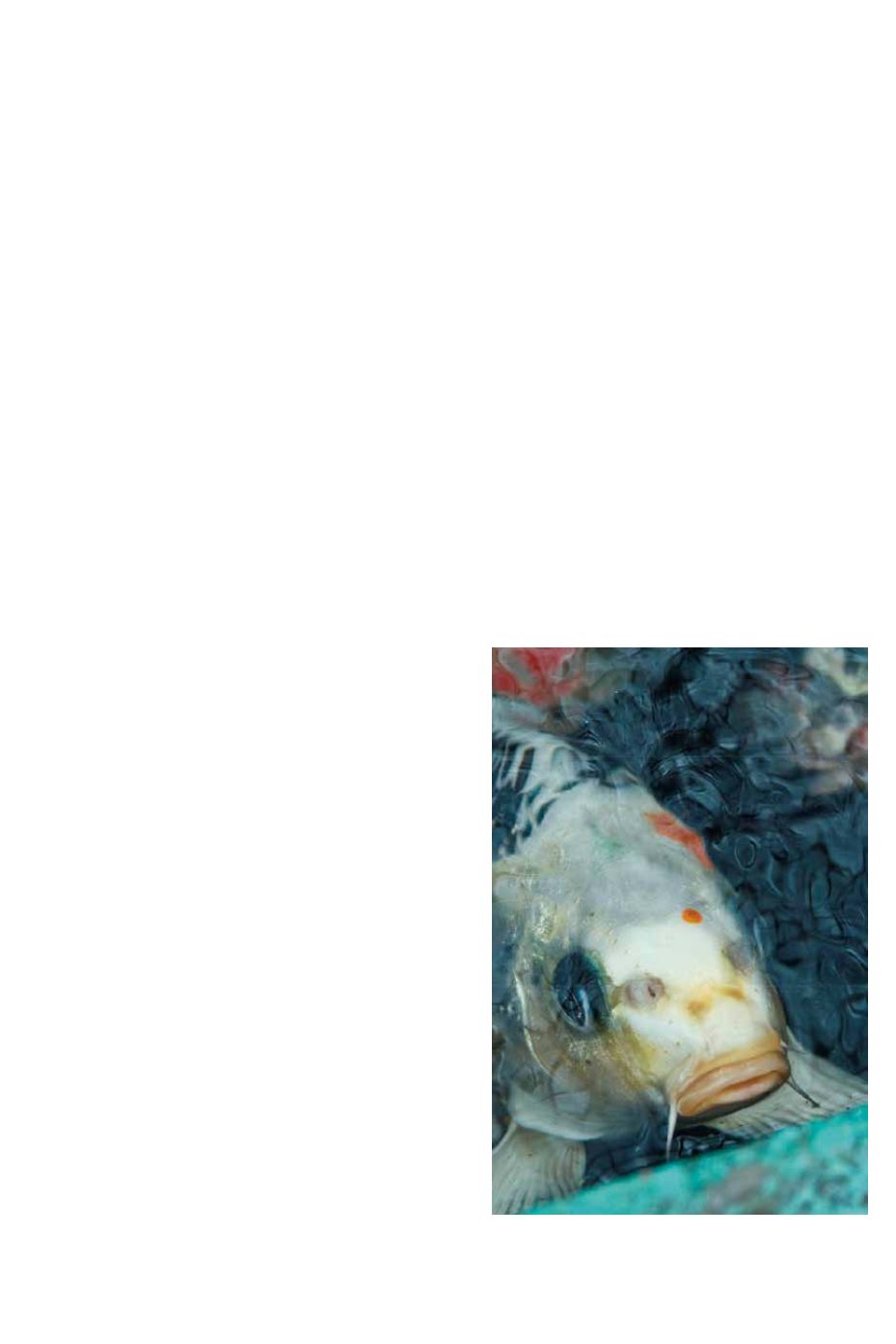
37
Fax: 519-782-3139 or 1-800-728-6324 Email:
Transplanting Potted Shallow Water Plants
Potted plants may be transplanted at any time. Half fill an 8" pot (or larger) with moistened tamped soil.
Carefully remove the original pot from the plant and place the plant (soil and all) into the centre of the pot.
Fill the remaining space with moist soil leaving about 1" from the top of the pot. Tamp soil down gently. Cover
soil with a layer of gravel, leaving the crown of the plant protruding. The gravel will keep the soil from being
stirred up and discolouring the water and also prevents the fish from uprooting the plants. Soak the soil with
some warm pond water before placing the containers in the pond to avoid muddying up your pond water.
Fertilize monthly to encourage growth and bloom.
Positioning Shallow Water Plants
Marginal plants are often situated on the pond shelves; adjustments may be required for proper depth. See
Hardy and Tropical Marginal pages (13-20) for proper planting depth. If shelves are full, try using blocks or
inverted pots to position plants at proper depth anywhere in the pond.
Fertilizing
Directions for Trico Fertilizer Tablets:
Use 6 tablets per 18-27 litre lily or lotus container in the spring or when first planting. Use 2-3 tablets per 8" pot
for shallow water plants. Your lilies should be fertilized monthly with 4 tablets per lily container and 1-2 tablets
per 8" pot for shallow water plants. Be sure to keep the tablets a few inches away from the crown to prevent
burning. Push the fertilizer tablet as far down as you can with your finger. Then fill in the holes with soil to
prevent the fertilizer from leaching into the water. Do not fertilize hardy plants after mid August.
Directions for Laguna Fertilizer Spikes:
Use 3 spikes per 18 litre lily container, 4-5 spikes per 27 litre lily or lotus container in the spring or when first
planting. Use 1 spike per 8" pot for shallow water plants. Do not fertilize hardy plants after mid August.
FISH INFORMATION
Stocking rate
Recommended stocking rate is a maximum of 1" of
Goldfish or 0.5" of Koi per square foot of surface area
.
Be sure to allow for growth and reproduction (Koi grow
very rapidly). A large population of fish and overfeeding
may result in an unbalanced pond with poor water quality.
A large fish population may require extra filtration.
Biofiltration is necessary when fish numbers are high. See
page 28-29 for filters and page 38-39 for more information
on filters. Overstocking puts stress on the fish, and stressed
fish are disease prone (See page 21 for our fish selection).
Feeding Your Fish
Fish will naturally consume mosquito larvae and other
insects in the water. If fish are fed regularly at the edge
of the pond, they will soon become tame and approach
visitors. Feed once per day only as much as will be
consumed in 5 minutes.
DO NOT OVERFEED!
Excessive
feeding will lower the water quality and fish are likely to
become sick. Fish eat less in cool water (i.e. early spring and
fall), as their metabolism slows down. Low protein foods
may be fed when water temperature is between 10°C, 50°F,
and 15°C, 60°F. Do not feed when water temperature drops
below 10°C (See page 21 for fish food).
INFORMATION PAGES
cont’d
Photo courtesy of Alan Noon


